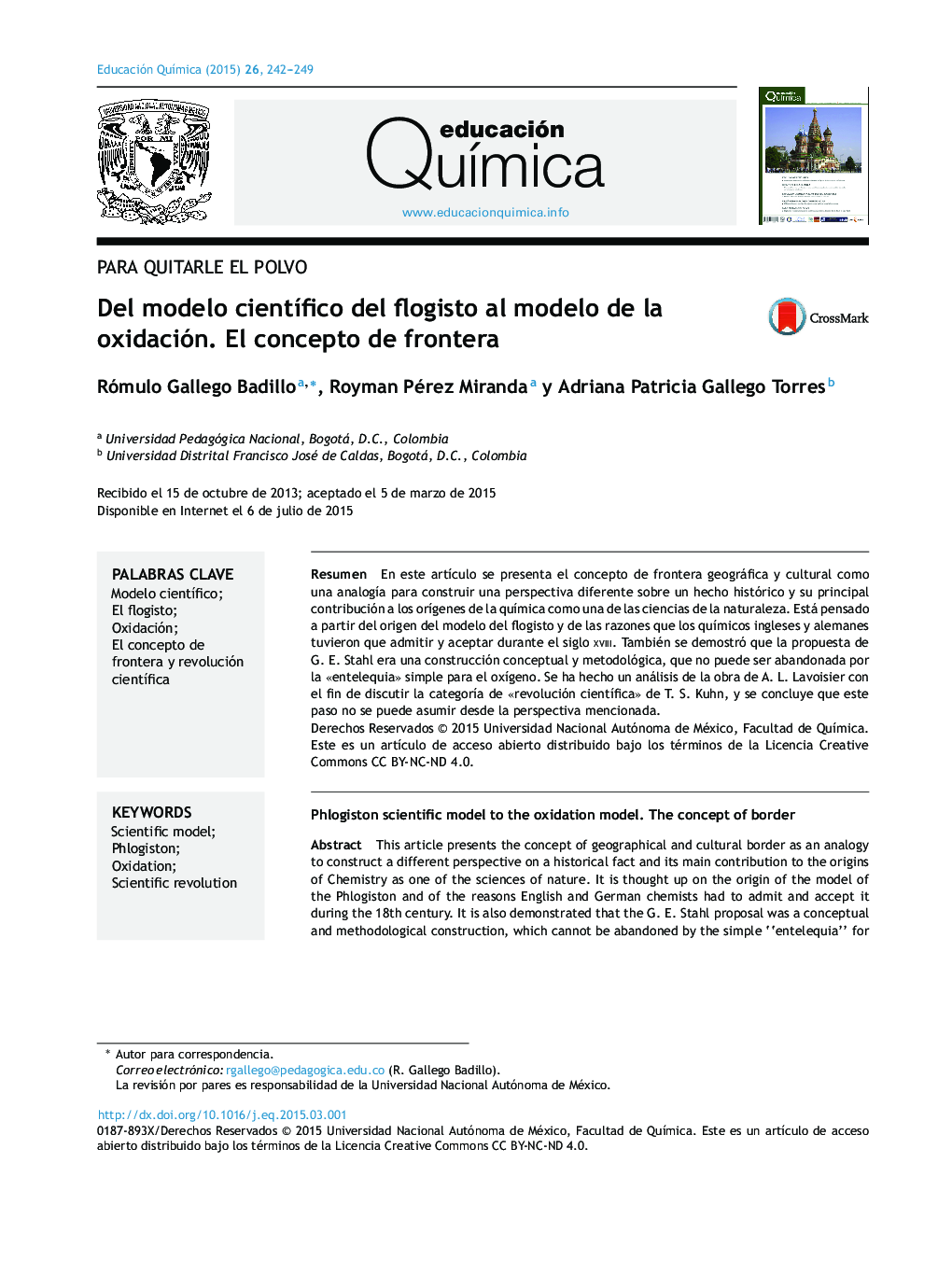| کد مقاله | کد نشریه | سال انتشار | مقاله انگلیسی | نسخه تمام متن |
|---|---|---|---|---|
| 1184371 | 963335 | 2015 | 8 صفحه PDF | دانلود رایگان |

ResumenEn este artículo se presenta el concepto de frontera geográfica y cultural como una analogía para construir una perspectiva diferente sobre un hecho histórico y su principal contribución a los orígenes de la química como una de las ciencias de la naturaleza. Está pensado a partir del origen del modelo del flogisto y de las razones que los químicos ingleses y alemanes tuvieron que admitir y aceptar durante el siglo xviii. También se demostró que la propuesta de G. E. Stahl era una construcción conceptual y metodológica, que no puede ser abandonada por la «entelequia» simple para el oxígeno. Se ha hecho un análisis de la obra de A. L. Lavoisier con el fin de discutir la categoría de «revolución científica» de T. S. Kuhn, y se concluye que este paso no se puede asumir desde la perspectiva mencionada.
This article presents the concept of geographical and cultural border as an analogy to construct a different perspective on a historical fact and its main contribution to the origins of Chemistry as one of the sciences of nature. It is thought up on the origin of the model of the Phlogiston and of the reasons English and German chemists had to admit and accept it during the 18th century. It is also demonstrated that the G. E. Stahl proposal was a conceptual and methodological construction, which cannot be abandoned by the simple “entelequia” for the oxygen. An analysis of A. L. Lavoisier work was done in order to discuss the category of “scientific Revolution” of T. S. Kuhn, and conclude, that this step cannot be assumed from the above mentioned perspective.
Journal: Educación Química - Volume 26, Issue 3, July 2015, Pages 242–249